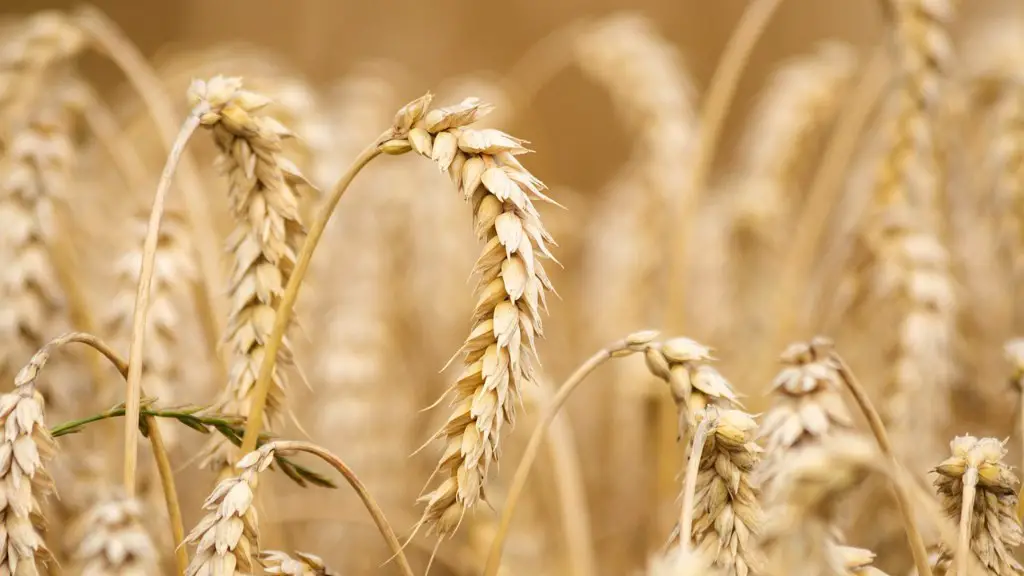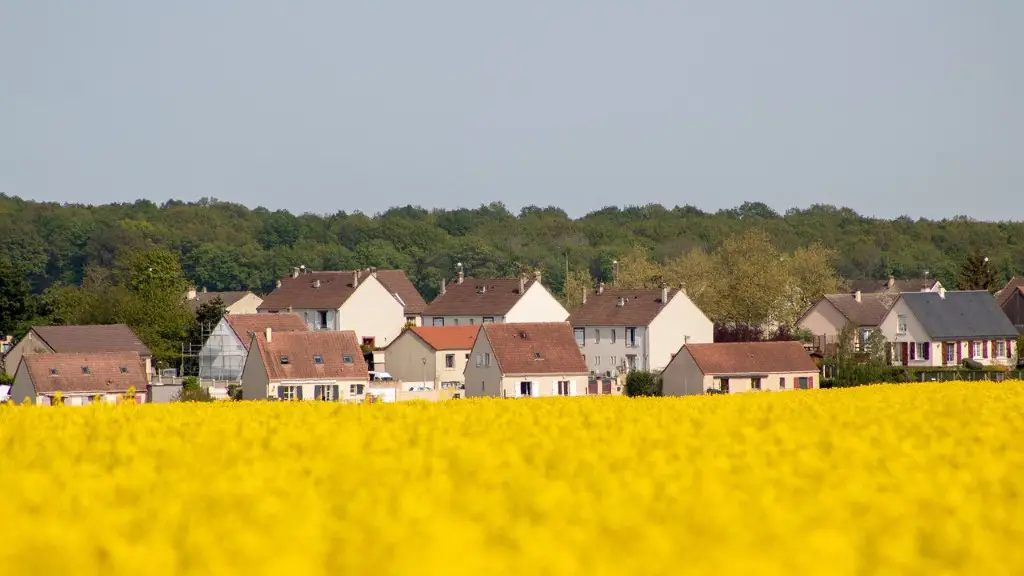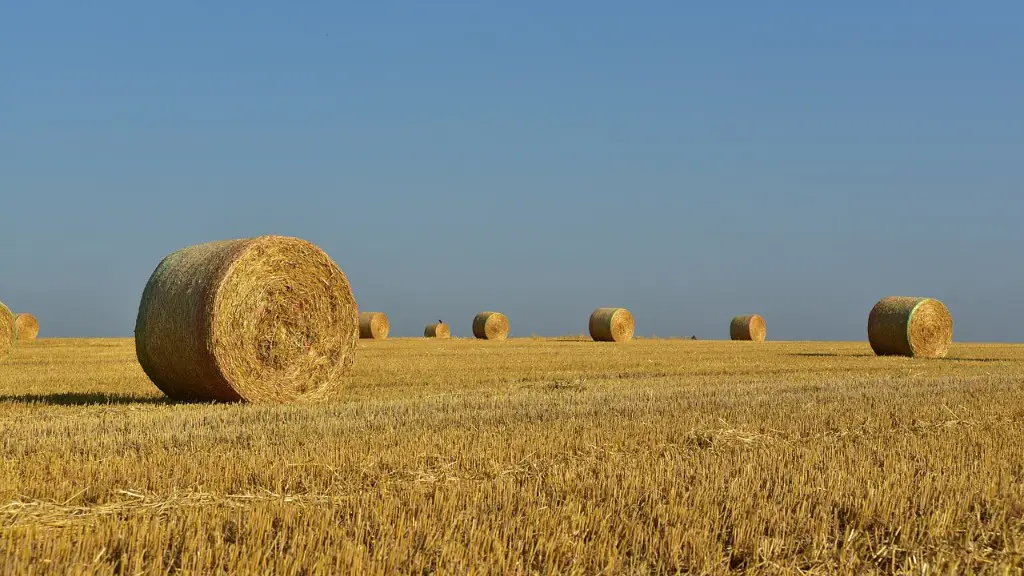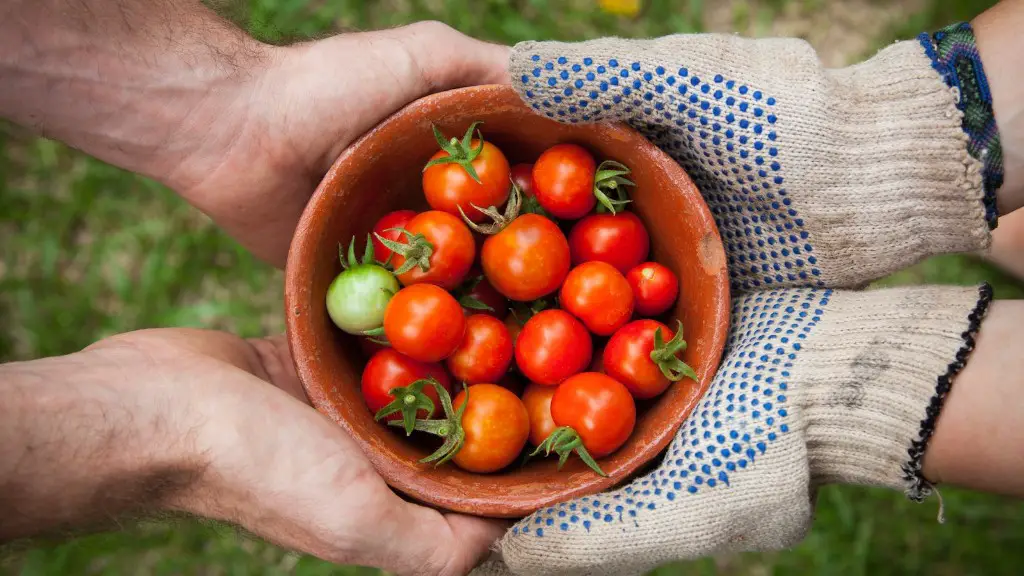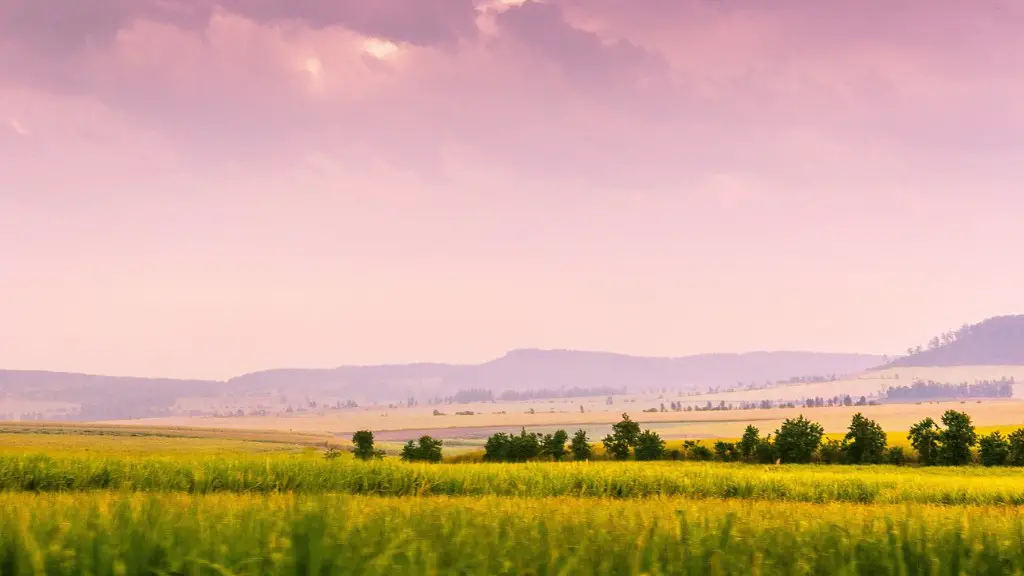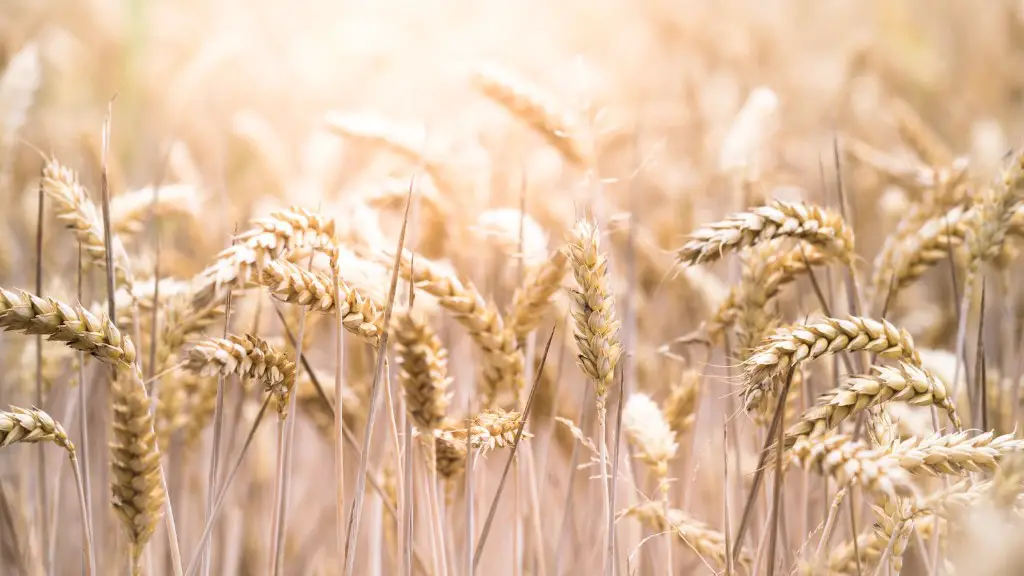Climate change is already making an impact on agriculture around the globe. The Intergovernmental Panel on Climate Change (IPCC) warns that climate change will have a number of significant impacts on agricultural production, including reductions in yields, increases in prices, and higher levels of risks and uncertainty. The poorest and most vulnerable people are likely to be the most severely affected.
Climate change causes an increase in temperature and extreme weather conditions, which can have a negative impact on agriculture. crops may be damaged by heat, floods, or drought. Soil moisture content and fertility can also be affected. This can lead to lower crop yields and even failure of crops to thrive. In addition, pests and diseases may become more prevalent, and crop pollination may be disrupted.
What are the agricultural impacts of climate change?
Climate change has the potential to disrupt food availability, reduce access to food, and affect food quality. For example, projected increases in temperatures, changes in precipitation patterns, changes in extreme weather events, and reductions in water availability may all result in reduced agricultural productivity. This could lead to higher food prices, reduced food availability, and lower food quality.
Climate change is already having an impact on agriculture in the United States. Flooding is becoming more common in many agricultural regions, due to heavier rains and more severe weather patterns. This is making it difficult for farmers to keep their crops and livestock safe, and is resulting in lower yields and increased costs. In addition, sea level rise is making flooding more common in coastal areas, which is also damaging crops and infrastructure. Climate change is thus making it more difficult for farmers to produce food and make a living, and is likely to cause even more problems in the future.
How does climate contribute to agriculture
Agricultural production is highly dependent on weather and climate. Without adequate rainfall and appropriate temperatures, crops fail and pastures become barren. Interestingly, the opposite is also true: weather and climate are influenced by agricultural practices.
Agricultural production has a significant impact on the environment. The five main environmental effects of agriculture are soil fertility loss, eutrophication of water bodies, deforestation, climate change and pesticide pollution.
Soil fertility loss is caused by the depletion of nutrients in the soil due to crop production. This can lead to soil degradation and desertification.
Eutrophication of water bodies occurs when there is an excess of nutrients in the water, which can lead to algal blooms and fish kills.
Deforestation is caused by the conversion of forests to farmland. This results in loss of habitat for wildlife, and can also lead to soil erosion and climate change.
Climate change is caused by the release of greenhouse gases from agricultural production, including methane from livestock and carbon dioxide from deforestation.
Pesticide pollution occurs when pesticides used in agriculture contaminate water bodies and soils. This can lead to health problems for humans and animals, and can also damage ecosystems.
What are the impacts of climate change in agriculture give at least four?
The negative impacts of global warming are many and varied. One of the most significant is the impact on crops. High temperatures can reduce the growth period, leading to reduced crop quantity and quality. Additionally, the sugar content, coloration, and storage stability of fruits can be adversely affected by high temperatures. Furthermore, agricultural crops are susceptible to an increase in weeds, blights, and harmful insects. Finally, global warming can lead to reduced land availability for agriculture.
Water use and water pollution are the two main environmental problems that arise from food production. According to the United Nations Food and Agriculture Organization, agriculture is responsible for 70% of global freshwater withdrawals and up to 92% in some developing countries. This high demand for water can lead to water shortages in areas where agriculture is the main economic activity. In addition, the use of pesticides and fertilizers can pollute water resources, leading to negative impacts on the environment and human health.
Greenhouse gas emissions from food production are also a major environmental concern. The United Nations Intergovernmental Panel on Climate Change estimates that agriculture, forestry, and other land-use activities account for 24% of global greenhouse gas emissions. These emissions come from activities such as livestock production, deforestation, and soil degradation.
Finally, the depletion of natural resources is another environmental problem associated with food production. According to the World Wildlife Fund, the global food system is responsible for the loss of up to 30% of the world’s biodiversity. This loss is caused by factors such as habitat destruction, overfishing, and the conversion of natural habitats to agricultural land.
What are 3 negative effects of agriculture on the environment?
There are both pros and cons to large-scale, conventional farming. On the one hand, it can yield high production levels. On the other hand, it can contribute to climate change, pollute air and water, and deplete soil fertility.
There is no easy answer when it comes to deciding whether or not to support large-scale, conventional farming. It is important to weigh the pros and cons carefully before making a decision.
An increase in temperatures will trigger a higher demand for water for evapotranspiration by crops and natural vegetation, which will lead to more rapid depletion of soil moisture. This scenario, combined with changes in rainfall patterns may lead to more frequent crop failures.
Climate change is already causing an increase in temperatures, and this is expected to continue. As temperatures rise, more water will be evaporated from the ground, plants, and other surfaces. This will lead to a higher demand for water, which may not be sustainable in some areas.
Changes in rainfall patterns are also expected with climate change. Some areas may experience more rain, while others may have less. This could create problems for farmers, as they may not be able to rely on normal weather patterns to know when to plant or harvest their crops.
The combination of higher temperatures, increased evapotranspiration, and changes in rainfall patterns could lead to more frequent crop failures. This would be a major problem for food security, as well as the economy. Farmers would need to adapt their practices to the new conditions, and this would be a challenge.
How does climate change affect agriculture and food security
Climate change has been found to have an impact on food safety, particularly on incidence and prevalence of food-borne diseases. Increased climate variability, increased frequency and intensity of extreme events as well as slow ongoing changes will affect the stability of food supply, access and utilization. Changes in local climate conditions can lead to the emergence and re-emergence of food-borne diseases, as well as changes in the distribution and abundance of food-borne pathogens. Extreme weather events can also disrupt food supply chains, resulting in shortages and increased prices. All of these factors underscore the importance of good food safety and hygiene practices, as well as the need for robust food safety systems.
Livestock are an important part of the agricultural industry, but they also have a significant impact on the environment. Greenhouse gas emissions from livestock are a major contributor to climate change, and overgrazing can lead to environmental damage and soil erosion. In order to sustainably manage livestock, it is important to consider the environmental impact of their grazing and waste.
Does climate change have a negative impact on agriculture?
Climate change affects plant growth in a number of ways. Most directly, it affects plants’ phenological growth (phases in the plant’s development which require certain thresholds of sunlight, heat and moisture) and physical growth, as well as animal growth and exposure to pests and diseases. Ultimately it contributes directly to yield.
Climate change, deforestation, landlessness, lack of integration, land fragmentation, land degradation, and urbanization are all major challenges that the world is facing today. With the rapid population growth and the associated increase in demand for resources, these problems are only expected to worsen in the future. To effectively address these challenges, it is essential that we find ways to promote sustainable development. This means finding ways to use resources more efficiently, protecting and restoring ecosystems, and promoting social and economic inclusion. Only by working together can we hope to effectively address these issues and create a more sustainable future for all.
What are the three biggest environmental impacts of conventional agriculture
Organic agriculture, on the other hand, can help reduce greenhouse gas emissions, improve soil health, and protect human health.
Climate change is having a large economic impact on agriculture, especially in developing countries. Warming temperatures are causing crops to fail and livestock to suffer. This is leading to higher food prices and unmet food needs. Climate change is also causing extreme weather events, which damage crops and infrastructure.
What are the three most important issues facing agriculture today?
Farmers have to deal with a lot of environmental issues that can impact their profits and productivity. Soil quality, water quality, climate, and terrain are just a few of the things that can make a difference in how successful a farmer is in any given growing season. It’s important for farmers to be aware of all of the environmental factors that can impact their business, so that they can be prepared for whatever comes their way.
Farmers are experiencing significant cost increases in fertilizer, crop protection, and labor. These costs are putting pressure onfarmers’ profitability and are a major concern for the future of the agriculture industry. There are a number of ways to address thesecost increases, but it will require a concerted effort from all stakeholders to find solutions that work for farmers and the agriculture industry as a whole.
What is one issue in agriculture today
The high cost of fuel and fertilizer has severely impacted farmers and ranchers, especially as they navigated the fall harvest season. Fuel cost increased by more than 60% from 2021 to 2022, while the cost of fertilizer increased by even more. This put a major strain on farmers’ budgets and made it difficult to profit from their crops. The situation was exacerbated by the fact that many farmers had to take out loans to buy fuel and fertilizer in the first place. This cycle of debt put many farmers at risk of losing their farms altogether. The high cost of inputs is a major problem facing the agriculture industry today, and it is one that needs to be addressed urgently.
Agriculture affects the environment in a variety of ways. It can lead to soil erosion and water pollution, contribute to climate change, and cause deforestation. While some of these effects are positive, such as increasing crop yields, others can be negative, like the release of greenhouse gases into the atmosphere. As the world’s population continues to grow, it is important to find ways to sustainably produce food while minimizing the negative impact on the environment.
Final Words
The impacts of climate change on agriculture are far-reaching and potentially devastating. Warmer temperatures and changes in precipitation patterns will impact crop yields, while extreme weather events will damage infrastructure and disrupt supply chains. The impact on agriculture will also be felt by the broader food system, as higher prices for food commodities lead to inflation and increased hunger.
Climate change will have a number of impacts on agriculture, including longer and hotter growing seasons, increased pests and diseases, and changes in water availability. all of these impacts will have an effect on crop yields, and will likely lead to an increase in food prices.
